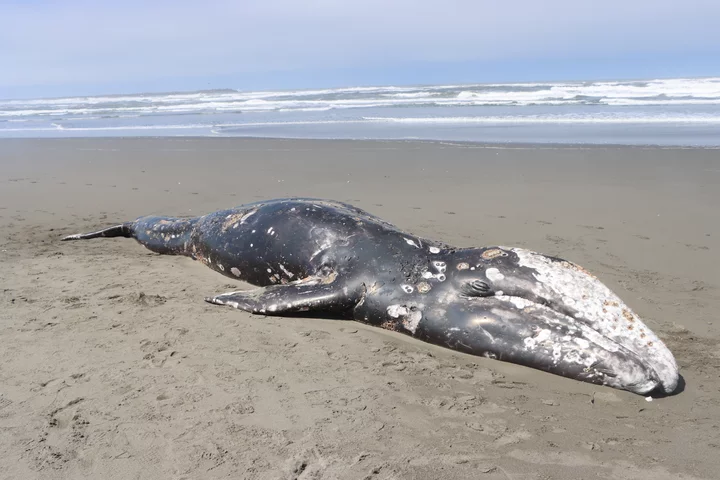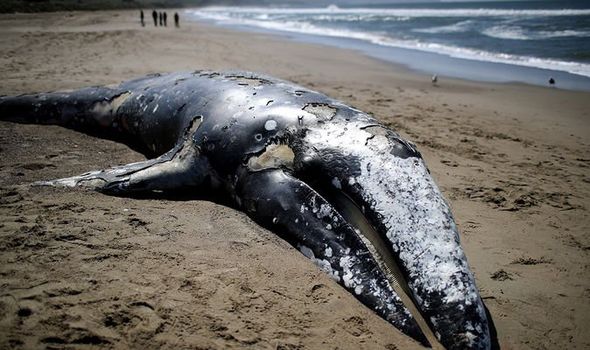Recent discoveries have shed light on the perplexing phenomenon of mass gray whale deaths off the coast of North America. These marine giants have suffered alarmingly high death rates since the 1980s.
A recent study suggests a connection between these die-offs and fluctuating Arctic Sea ice levels.
Historically, three significant mortality events have impacted the gray whale population in the northeastern Pacific. These events have led to a population decline ranging from 15% to 25% during each occurrence.
To give some context, over 2,000 gray whales have lost their lives to these events. The inaugural die-off, which transpired from 1987 to 1989, was the most devastating, claiming the lives of at least 700 whales.
The actual number, however, might be higher as systematic reporting and comprehensive surveys were only adopted in the subsequent decade. A subsequent event between 1999 and 2000 took 651 whales. The most recent mortality surge, which began in 2019, has so far seen the death of 688 gray whales.
“These drastic population fluctuations are not something we anticipated in a species as resilient and long-lived as gray whales,” shared Joshua Stewart, the study’s primary author and an assistant professor at Oregon State University’s Marine Mammal Institute.
Historically, commercial whaling had reduced the North Pacific gray whales to the brink of extinction. But against the odds, the species rebounded, and their numbers are now estimated to be around 14,500.

Scientists initially hypothesized that these periodical die-offs might be nature’s way of controlling the population, given that their numbers might exceed the resources of their habitat.
At this point, that hypothesis can be largely discounted.
In fact, the current study, recently published in the journal Science, has a more practical hypothesis. The state of sea ice in the Arctic and its implications on the gray whales’ food availability seem to play a pivotal role.
In short, they’re dying from starvation.
Some years have witnessed increased ice cover, potentially barring the whales from reaching their feeding grounds in the Bering and Chukchi seas. Stewart explained, “A low prey count in the Arctic, compounded by restricted access to feeding zones due to sea ice, can devastate the gray whale population.”
And it is!
Following the initial two mortality events, the gray whale population showed commendable recovery. But the die-off that started in 2019 thrusts us into an unknown realm.
The most recent mortality might be attributed to an unprecedented decline in Arctic Sea ice.
This ice is vital because it harbors algae on its underbelly. As this algae decays, it nourishes the seabed, consequently supporting bottom-dwelling crustaceans, a primary food source for gray whales.

Stewart went on to explain the domino effect involved: “Less ice translates to diminished algae populations, which, in turn, affects the gray whales’ food supply.”
More To Discover
- The Alarming Disappearance of Amphibians: A Global Cry for Help That Will Deeply Affect Us If We Ignore It
- The Billion-Dollar Trust Issue: When the Price of Scientific Publishing Eclipses the Value of Knowledge
- Snapdragon DNA Meets Tomato: Grow a Super Healthy Purple Marvel in Your Garden
- UCLA and Singapore Launch Seawater Plant to Snatch 10 Tons of CO2 Daily, Produces Clean Hydrogen Fuel
The melting ice exacerbates the situation by ushering in powerful currents that erode the seabed, rendering many marine creatures, including the whales’ prey, homeless. “All these factors collaboratively compromise the food resources that gray whales depend on,” Stewart emphasized.
The prolonged nature of the current die-off event could be a consequence of climate change. Stewart observed, “We are witnessing a more tumultuous response due to rapidly evolving and unpredictable oceanic conditions.” He believes that while the gray whale population in the northeastern Pacific may not be on the brink of extinction, a considerably warmed Arctic Ocean might not sustain a population as large as 25,000 gray whales, as seen in recent history.




















